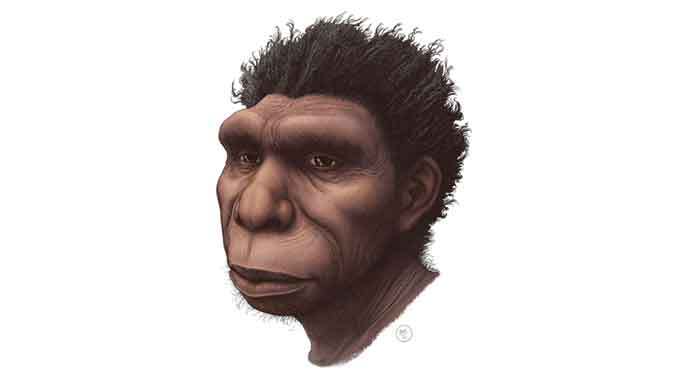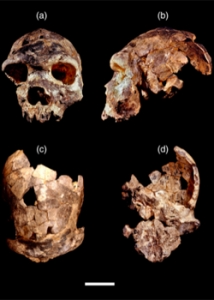Potential Direct Ancestor Of Modern Humans Identified
A direct ancestor to modern humans has been identified, providing clarity to an important chapter in human evolution.
 Artist rendering of Homo bodoensis (Credit: Ettore Mazza) The announcement by an international team of researchers, including a University of Hawaiʻi at Mānoa professor, was published on October 28 in Evolutionary Anthropology.
Artist rendering of Homo bodoensis (Credit: Ettore Mazza) The announcement by an international team of researchers, including a University of Hawaiʻi at Mānoa professor, was published on October 28 in Evolutionary Anthropology.
Homo bodoensis lived in Africa during the Middle Pleistocene (774,000-129,000 years ago). The new name is based on a reassessment of existing fossils from Africa and Eurasia from this time period, according to co- and corresponding author Professor and Department Chair Christopher Bae from UH Mānoa’s Department of Anthropology in the College of Social Sciences.
The Middle Pleistocene is an important time period because it saw the rise of our species (Homo sapiens) in Africa and the Neanderthals (Homo neanderthalensis) in Europe. However, the time period is poorly understood, often being called the “muddle in the middle.”
“The new species, Homo bodoensis, should help to simplify the picture of human evolution during the Middle Pleistocene because it is more clearly defined, where the African fossils can easily fit,” Bae said.
Clearing up the confusion
 Homo bodoensis actual fossil (Photo credit: Jeffrey H. Schwartz)
Homo bodoensis actual fossil (Photo credit: Jeffrey H. Schwartz)
Fossils discovered from the Middle Pleistocene have historically been assigned to either Homo heidelbergensis or Homo rhodesiensis. However, experts said both species carry multiple and often contradictory definitions. For instance, recent DNA evidence has shown that some fossils in Europe called Homo heidelbergensis were actually early Neanderthals. In addition, African fossils have been called both Homo heidelbergensis and Homo rhodesiensis.
“The traditionally problematical taxa (Homo heidelbergensis and Homo rhodesiensis) have not been well defined, where everything ends up getting dumped in there that is not clearly Homo erectus, Homo neanderthalensis or Homo sapiens,” Bae said. “Further, given the political baggage attached to Cecil Rhodes (former prime minister of Cape Colony) and colonial southern Africa, namely Rhodesia, it is high time to have Homo rhodesiensis removed. There is a strong push to decolonize anthropology and paleoanthropology is no different.”
The name “bodoensis” comes from a skull found in Ethiopia. Bae said under the new classification, Homo bodoensis will describe most Middle Pleistocene humans from Africa and some from eastern Europe, while many from western Europe will eventually be reclassified as early Neanderthals. Given that modern humans are currently considered to have arisen in Africa, Bae said it seems logical that Homo bodoensis could be its direct ancestor.
Bae’s co-authors are Mirjana Roksandic from the University of Winnipeg (Canada), Predrag Radović from the University of Belgrade (Serbia) and Xiu-Jie Wu from the Institute of Vertebrate Paleontology and Paleoanthropology (China).
This work is an example of UH Mānoa’s goal of Excellence in Research: Advancing the Research and Creative Work Enterprise (PDF), one of four goals identified in the 2015–25 Strategic Plan (PDF), updated in December 2020.
Publication: Mirjana Roksandic, et al. Resolving the “muddle in the middle”: The case for Homo bodoensis sp. nov. Evolutionary Anthropology, (2023). DOI: 10.1002/evan.21929
Original Story Source: University of Hawaii at Manoa

 Alerts Sign-up
Alerts Sign-up